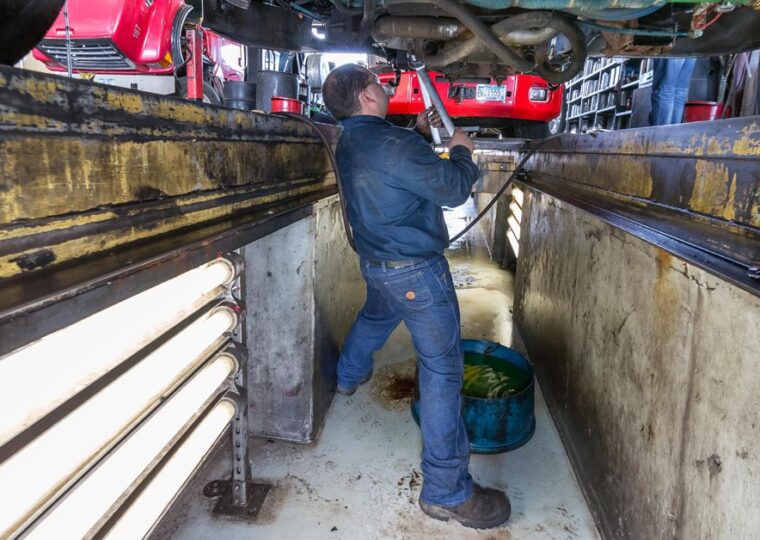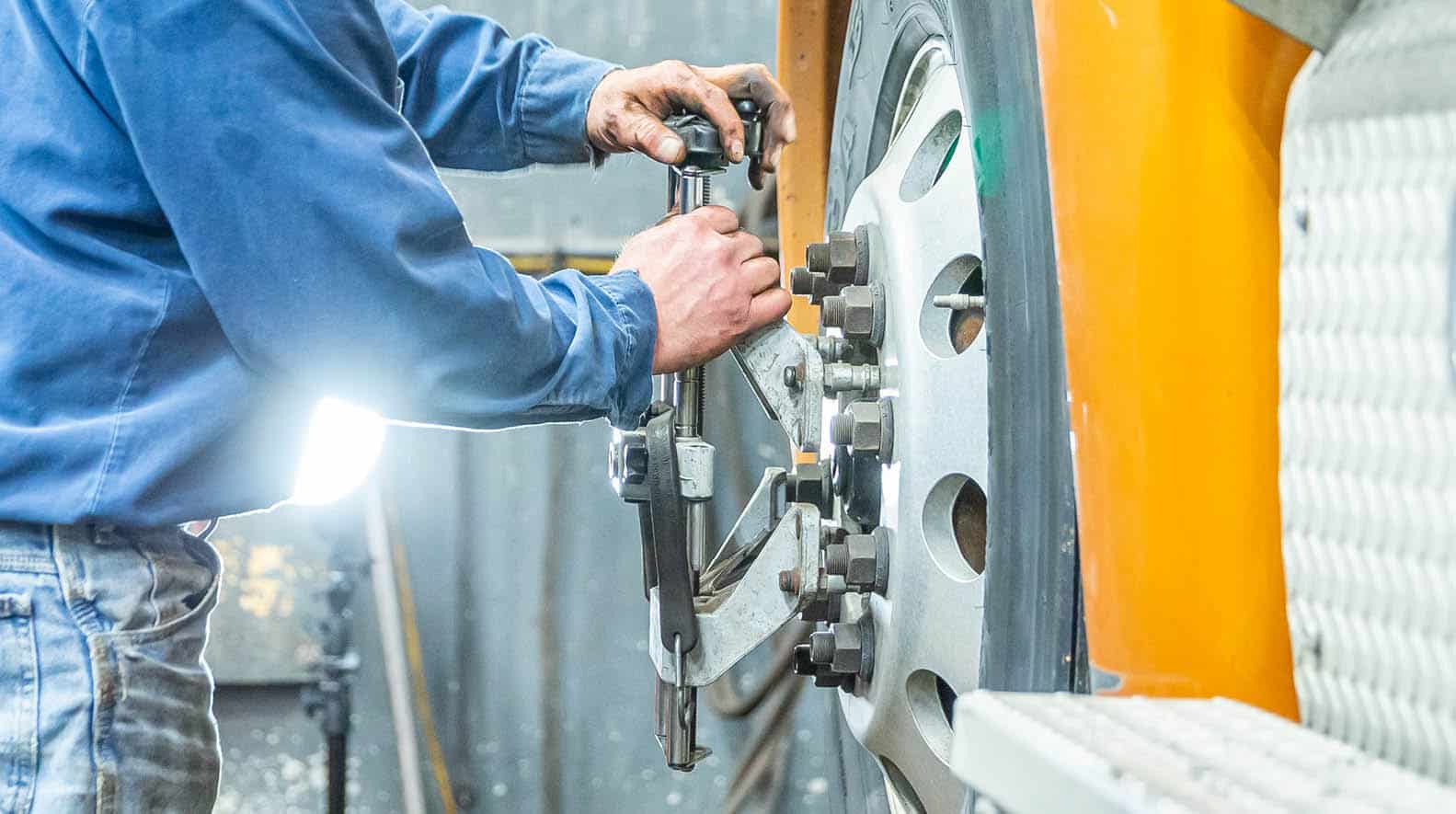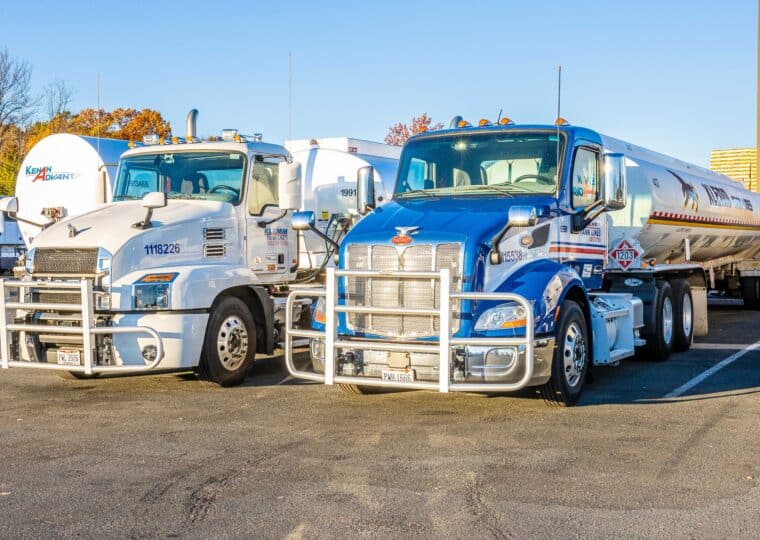In the trucking and transportation industry, every minute you’re off the road due to mechanical issues can mean missing out on much-needed revenue. Plus, it’s just plain frustrating to have to deal with truck repair work that can often take days – or even weeks – to complete.
The good news is that there is a way to minimize the number of disruptions to your schedule and it’s as simple as implementing a comprehensive fleet preventative maintenance program. While it won’t prevent every problem from happening, a good maintenance program will go a long way toward keeping your fleet up and running safely and efficiently.
Why Is Fleet Maintenance So Important?
In fleet maintenance, owners, managers and operators develop a standard set of processes aimed at ensuring that all vehicles in the fleet are in good condition and ready to hit the road. So why is fleet maintenance so important? There are almost too many reasons to count, but here are four of the main ones:
Safety
First and foremost, it’s all about safety. Well-maintained vehicles are less likely to be involved in dangerous accidents because many of the common mechanical issues that cause crashes such as faulty brakes and suspension problems have been taken care of on the front end. This not only keeps the vehicle’s driver safe, it also helps protect nearby motorists.
Cost Savings
While performing preventive maintenance isn’t free, it’s still far cheaper than what you’ll spend on reactive repairs should something go wrong on the road. In fact, according to OSHA, motor vehicle crashes cost employers $60 billion per year in medical care, legal expenses, property damage and lost productivity.
That’s a pretty big chunk of change! Plus, when your vehicles aren’t maintained – especially your engines and your tires – it can make them less efficient and more expensive to operate.
For these reasons and many more, investing in preventive maintenance is one of the smartest things you can do to lower your operational costs.
Increased Productivity
When a vehicle in your fleet breaks down and causes you to miss a delivery, it can trigger a chain reaction that can end up impacting your brand’s reputation – and your bottom line.
By implementing a solid fleet maintenance program, you’ll be able to keep your fleet in tip-top shape year-round so you can avoid this type of disruption and prevent your productivity from taking a hit.
Compliance
Inspections are part and parcel for fleet managers and when even one of your vehicles has a compliance issue, it can lead to all sorts of problems including shipping delays and fines.
A fleet maintenance program will ensure that your vehicles are in good working order and that you have the documentation to prove it. Then, when it’s time for a state or federal inspection, your fleet will pass with flying colors – and you can stay on the road doing what you do best.
Fleet Maintenance Best Practices
Let’s face it. When you’re busy managing a fleet of vehicles, there are always dozens of tasks on your plate and it can be easy to let maintenance fall by the wayside. However, if you’re looking to make improvements to your preventative fleet maintenance program – or to start one in the first place – it’s important to keep your goals in mind and to constantly be searching for ways to be proactive.
Here are a few best practices to keep in mind:
- Create a metrics-based maintenance schedule – Writing out a maintenance “to-do” checklist is definitely important and we’ll go over what that checklist should include below. However, it’s equally important to set up a schedule to ensure essential tasks like oil changes and tire pressure checks actually get done. Your owners’ manuals are a good source of information for establishing a general service interval timeline, but you’ll also want to use metrics to determine when preventative maintenance needs to be done. Whether you opt to use mileage, fuel usage, operating hours, or something else it’s important to set up some kind of system to alert you when service needs to be done.
- Purchase fleet maintenance software – Fleet maintenance software can be a game-changer when it comes to monitoring your fleet. Even if all it did was help you stay on top of your maintenance schedule, it would be well worth the purchase price. However, fleet maintenance software can do so much more than that – it can help track everything from your vehicles to your purchase orders and can even serve as a request portal for clients and operators. Additionally, the software can quickly generate detailed reports that can help you identify patterns, analyze costs and make plans for the future.
- Stay on top of your inventory – There are certain truck parts and equipment that you should always have on hand at a moment’s notice such as filters, hoses, belts, and fluids. You can use your fleet maintenance software to help you keep track of your inventory – and even place orders automatically when supplies are low – so you won’t run the risk of being out of the items you need when you need them most.
- Monitor your data – You can run reports all day long but if you’re not looking at the data and tracking your metrics, there’s really no point in doing it at all. By setting benchmarks and checking them regularly, you’ll be able to see if your preventative maintenance measures are doing what they’re supposed to or if there’s room for improvement. Some areas you may want to look at include vehicle performance (are some vehicle classes breaking down more than others?) and lifespan (is my maintenance plan increasing the longevity of my vehicles?). You can use this information to gain valuable insight that can help you make smarter, more cost-effective decisions.
- Know when to hold ‘em – and when to fold ‘em – It’s true when you’re talking about cards, but it also applies to vehicle ownership. Even with the best maintenance plan in place, as your vehicle gets older, it’s inevitably going to have more problems that can become increasingly costly to fix. As you track the data on each vehicle, you’ll be able to see how much it is costing you to operate and whether it’s worth the expense. And while the data can help you make an informed decision, it’s also important to keep an eye on trends in the used vehicle market so you’ll know the most optimal time to make a sale.
A Preventative Maintenance Checklist to Help You Stay on Top of Your Fleet
 Creating a checklist is an essential part of the preventative maintenance process. While the list can vary based on the class of vehicles you’re dealing with, we’ve included the most common activities you’ll want to perform regularly.
Creating a checklist is an essential part of the preventative maintenance process. While the list can vary based on the class of vehicles you’re dealing with, we’ve included the most common activities you’ll want to perform regularly.
You don’t have to do all these tasks yourself, either. Your operators can – and should – do their part to keep your fleet running at peak performance. They don’t need to do anything complicated that requires expert training. Rather, they should simply be asked to perform a basic inspection at the beginning and the end of their shifts and report any issues they see, hear or feel while they’re driving.
By doing this, they can provide valuable input that can prevent small problems from turning into major headaches.
Here are some of the items that should be included on your maintenance checklist:
- Inspecting steering and suspension systems
- Inspecting brake systems and replacing shoes, pads, drums, and rotors when needed
- Checking and changing fluid levels including antifreeze, engine oil, brake fluids, transmission fluids, Differential fluids, power steering fluids, and keeping an eye out for leaks
- Servicing and repairing driveshafts and CV joints
- Checking and replacing belts and hoses as needed
- Checking the overall condition of the vehicle
- Replacing windshield wipers and keeping fluid full
- Monitoring auxiliary systems and equipment
- Inspecting the exhaust system
- Testing heating and air conditioning systems
- Performing general tune-ups
- Inspecting engine and transmission mounts
- Testing seat belts
- Checking the condition of seats
- Monitoring electrical system connections
- Checking tire quality and pressures
- Replacing air filters
- Checking and greasing the fifth wheel
Get Help From Fleet Maintenance Experts
If you’re getting ready to implement a fleet maintenance program and need a helping hand, you’ve come to the right place. The fleet maintenance experts at Blaine Brothers are dedicated to providing high-quality, competitively priced, and customized services to companies of all sizes.
As the leading fleet maintenance company in the upper midwest, our knowledge and expertise is unparalleled in the trucking and transportation community and the support and service we provide will keep your fleet running smoothly, safely, and efficiently for many miles to come.
We’ve been doing business this way for more than 40 years and we firmly believe in treating our customers like family. That’s one of the main reasons why we’re one of the most trusted names in the industry and we’re looking forward to continuing our tradition of excellence for many years to come.
Contact us today to find out how we can help you maximize your fleet’s potential.


